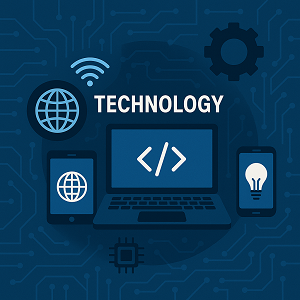TL;DR
- Business-class 2-in-1 laptop with enterprise-grade security and management features.
- Powered by 12th Gen Intel Core processors and Windows 11 Pro for optimal productivity.
- Equipped with TPM 2.0, Windows Hello, and Dell SafeBIOS for advanced protection.
- Starting price: approximately $2,245, offering strong ROI for enterprise deployments.
- Compact 14-inch form factor and long battery life suitable for hybrid work and travel.
What’s New or Important Now
The Dell Latitude 9430 remains a key model in Dell’s business lineup as of 2025, offering refined features that support remote and in-office work environments. It showcases a continued focus on security modernization and platform stability, complemented by the latest firmware updates from Dell Technologies. Learn more from official Dell insights here.
According to Windows Central, the Latitude 9430’s design and performance remain competitive due to its all-metal chassis, 16:10 display ratio, and intelligent feature set designed for corporate users. Dell continues to emphasize sustainability, using recycled materials and energy-efficient components in its Latitude series.
This model’s business relevance extends into 2025 through updates in system BIOS and integration with Dell Optimizer, enhancing personalized performance tuning and network manageability for IT administrators.
Buyer and Architect Guidance
IT architects and procurement teams looking for a secure, manageable, and durable laptop for professionals should view the Latitude 9430 as an ideal candidate for executives and mobile workers. It delivers high computing performance in a compact format while maintaining standardized enterprise security controls.
Primary Use Cases
- Executive and managerial computing – ideal for presentation and collaboration tasks.
- Field engineering – robust portability with reliable build and connectivity options.
- Hybrid workforce – optimized Wi-Fi 6E, Thunderbolt 4, and optional LTE for flexible use.
- Secure workstation integration – compliance-ready support for BitLocker and Secure Boot.
Sizing and Trade-offs
The Latitude 9430’s premium price point of around $2,245 reflects the advanced business features bundled. Organizations assessing large-scale rollouts should balance cost against centralized manageability via Dell Client Command Suite and long lifecycle value.
While it excels in performance and reliability, creative users or developers requiring discrete GPU acceleration may prefer the Dell Precision series. In contrast, cost-sensitive teams might consider Latitude 5000-series models for similar usability with less expense.
Feature Comparison
| Model | Display | Processor Options | Security | Approx. Starting Price (USD) |
|---|---|---|---|---|
| Dell Latitude 9430 | 14″ QHD+ 16:10 Touch (2-in-1) | 12th Gen Intel Core i5/i7 | TPM 2.0, Windows Hello, SafeBIOS | $2,245 |
| Dell Latitude 7440 | 14″ FHD+/QHD+ | 14th Gen Intel Core Ultra series | Windows Hello, IR Camera | $1,899 |
| Dell XPS 13 Plus | 13.4″ OLED/FHD+ Touch | 12th Gen Intel Core i7 | TPM 2.0 | $1,599 |
| Dell Precision 5480 | 14″ QHD+ with NVIDIA RTX | Intel Core i9, RTX 2000 Ada | TPM 2.0, Secure BIOS | $2,899 |
Mini Implementation Guide
Prerequisites
- Active Windows 11 Pro licensing and corporate domain integration.
- Dell Command | Configure utility for BIOS management.
- Company policies enabling TPM and BitLocker deployment.
- Latest BIOS and driver package updates from Dell Support.
Steps
- Unbox and inspect the Latitude 9430; connect to AC power.
- Install OS updates via Windows Update.
- Launch Dell Optimizer to tune performance settings.
- Activate TPM 2.0 in BIOS and enable Secure Boot.
- Enroll the system in your organization’s management console (e.g., Intune or Dell Endpoint Manager).
- Configure biometric login through Windows Hello for improved authentication speed.
Common Pitfalls
- Neglecting BIOS updates—critical for latest firmware security fixes.
- Incorrect TPM initialization—ensure encryption policies are correctly deployed.
- Improper driver installation—use verified Dell Support packages only.
- Overlooking Dell Optimizer calibration—can affect battery and CPU performance efficiency.
Cost and ROI Considerations
Although the Latitude 9430 commands a premium price tag, its ROI can be justified by reduced downtime, strong remote management flexibility, and extended device lifecycle. The embedded features—including Dell SafeBIOS, advanced webcam privacy shutters, and long battery performance—minimize enterprise vulnerability and improve overall productivity metrics. The high upfront cost is typically offset by lower total cost of ownership through three-year deployment cycles.
Frequently Asked Questions
1. When was the Dell Latitude 9430 released?
It was released in 2022, continuing as a business-grade flagship through 2025 thanks to ongoing firmware and support updates.
2. Does the Latitude 9430 support Windows 11 Pro features like BitLocker?
Yes. It includes TPM 2.0 hardware and is fully compatible with Microsoft BitLocker encryption and Windows Hello biometric authentication.
3. What are the battery life expectations?
Typical usage delivers up to 13 hours depending on configuration and workload, boosted by adaptive power tuning from Dell Optimizer.
4. Is it suitable for software developers?
Yes, but heavy graphical workloads may benefit more from Dell Precision models with discrete GPUs.
5. How does the 9430 differ from the Latitude 7440?
The 9430 features a 2-in-1 convertible touchscreen and higher-grade aluminum chassis aimed at premium executive users.
6. Can the system integrate with corporate device management tools?
Absolutely. It supports Dell Client Command Suite, Microsoft Intune, and other enterprise management frameworks.
Conclusion
The Dell Latitude 9430 embodies Dell’s best in business-class mobility and security, making it a top pick for organizations emphasizing secure hybrid work models. Its refined design and enterprise-grade controls provide reliability and confidence well into 2025. To explore deployment guides and technical deep dives, visit LearnDell Online.

